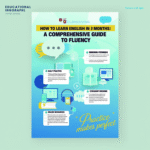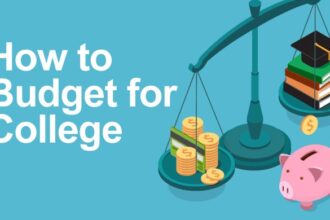In 2025, mastering a monthly budget plan for students is essential for achieving financial stability while navigating the demands of college life. We understand that balancing academics, social activities, and personal expenses can be daunting, especially with rising costs and limited income. This guide provides a detailed, actionable, and comprehensive monthly budget plan for students to help manage finances effectively, reduce stress, and build a foundation for long-term financial success. With practical strategies, real-world examples, and expert insights, we aim to empower students to take control of their money in 2025.
- Why Budgeting Matters for Students in 2025
- Step-by-Step Guide to Creating a Monthly Budget Plan for Students
- Step 1: Assess Your Total Income
- Step 2: Identify Fixed Expenses
- Step 3: Track Variable Expenses
- Step 4: Set a Weekly Budget
- Step 5: Allocate Funds Using the 50/30/20 Rule
- Step 6: Plan for Non-Monthly Expenses
- Step 7: Track and Adjust Regularly
- Sample Monthly Budget Plan for Students in 2025
- Advanced Budgeting Strategies for Students
- Leverage Student Discounts
- Cook at Home and Meal Plan
- Use Budgeting Tools
- Build an Emergency Fund
- Explore Side Hustles
- Minimize Subscription Costs
- Managing Financial Aid and Refunds
- Budgeting for Off-Campus vs. On-Campus Living
- Avoiding Common Budgeting Mistakes
- Financial Planning Beyond Budgeting
- Recommendations for Financial Success
- FAQs About Monthly Budget Plans for Students in 2025
Why Budgeting Matters for Students in 2025
Creating a monthly budget plan for students is more than just tracking expenses—it’s about gaining control over finances and setting the stage for a secure future. College students face unique financial challenges, from tuition fees to daily living costs, and without a structured plan, overspending can lead to debt and stress. In 2025, with inflation impacting costs like housing, food, and transportation, a well-crafted budget is critical for financial independence.
Budgeting offers several key benefits:
- Financial Awareness: Understanding income and expenses helps students make informed decisions.
- Debt Prevention: A budget minimizes reliance on loans or credit cards for daily expenses.
- Savings Growth: Allocating funds for emergencies or future goals builds financial resilience.
- Stress Reduction: Knowing where money is going reduces anxiety and fosters confidence.
By implementing a monthly budget plan for students, individuals can prioritize essential expenses, enjoy discretionary spending guilt-free, and avoid the pitfalls of financial mismanagement. This guide will walk through every step of creating and maintaining a budget tailored to student life in 2025.
Step-by-Step Guide to Creating a Monthly Budget Plan for Students
Building a monthly budget plan for students requires a systematic approach. Below, we outline a detailed process to help students craft a personalized budget that aligns with their financial goals and lifestyle.
Step 1: Assess Your Total Income
The foundation of any budget is understanding available income. Students in 2025 may have multiple income sources, including:
- Part-Time Jobs: Many students work 10–20 hours per week, earning $10–$20 per hour depending on location and role. For example, a student working 15 hours a week at $15 per hour earns $900 monthly.
- Scholarships and Grants: Non-repayable funds like Pell Grants or institutional scholarships provide steady income. For instance, a $5,500 Pell Grant disbursed over a 9-month academic year adds about $611 monthly.
- Family Support: Regular allowances or contributions from parents or relatives, such as $200 monthly, can supplement income.
- Financial Aid Refunds: After tuition and fees, excess financial aid can be distributed as a refund, often $1,000–$3,000 per semester, or $200–$600 monthly when divided.
- Side Hustles: Freelancing, tutoring, or gig economy jobs (e.g., ridesharing, food delivery) can add $100–$500 monthly, depending on time commitment.
To calculate total income, list all sources and their monthly contributions. For example:
- Part-time job: $900
- Scholarship: $611
- Family support: $200
- Total monthly income: $1,711
This figure serves as the baseline for allocating funds in the budget.
Step 2: Identify Fixed Expenses
Fixed expenses are consistent costs that remain stable each month. For students, these typically include:
- Rent or Housing: Off-campus rent averages $500–$1,200 monthly, depending on location. On-campus housing may cost $800–$1,500 per semester, or $400–$750 monthly when divided.
- Utilities: Off-campus students pay $100–$200 for electricity, water, and internet. Splitting utilities with roommates can reduce costs to $50–$100 per person.
- Phone Bill: A basic plan costs $30–$60 monthly, though student discounts can lower this to $20–$40.
- Tuition and Fees: If not covered by financial aid, monthly payments may range from $100–$500, depending on the institution and payment plan.
- Insurance: Health insurance through a university plan costs $50–$200 monthly, while car insurance for students with vehicles averages $100–$250.
For example, a student living off-campus might have:
- Rent: $600
- Utilities: $80
- Phone: $40
- Health insurance: $100
- Total fixed expenses: $820
Step 3: Track Variable Expenses
Variable expenses fluctuate based on lifestyle and choices. These include:
- Groceries: Students spend $150–$400 monthly, with costs varying by location. For example, grocery bills in high-cost areas like Hawaii average $471, while in low-cost areas like Wyoming, they’re closer to $168.
- Transportation: Public transit passes cost $30–$100 monthly, while gas and parking for car owners range from $40–$200. Campus parking permits can add $40–$500 per semester.
- Entertainment: Dining out, streaming services, and social activities average $50–$200 monthly. For instance, eating out twice a week at $20 per meal totals $160.
- Personal Care: Toiletries, haircuts, and gym memberships cost $20–$100 monthly.
- Miscellaneous: Unplanned expenses, such as gifts or small purchases, typically range from $20–$50.
Tracking these expenses over a month using apps like Mint or YNAB provides clarity. For example:
- Groceries: $200
- Transportation: $60
- Entertainment: $100
- Personal care: $30
- Miscellaneous: $30
- Total variable expenses: $420
Step 4: Set a Weekly Budget
To prevent overspending early in the month, calculate a weekly budget. Subtract fixed expenses from total income, then divide the remainder by the number of weeks in a term (typically 4–5 weeks per month). For example:
- Total income: $1,711
- Fixed expenses: $820
- Remaining for variable expenses and savings: $891
- Weekly budget (over 4 weeks): $891 ÷ 4 = $222.75
This weekly allowance covers variable expenses and discretionary spending, ensuring funds last throughout the month.
Step 5: Allocate Funds Using the 50/30/20 Rule
The 50/30/20 rule is a popular budgeting framework for students:
- 50% for Needs: Essential expenses like rent, utilities, groceries, and transportation.
- 30% for Wants: Non-essential spending, such as dining out, entertainment, or subscriptions.
- 20% for Savings or Debt Repayment: Building an emergency fund or paying off credit card balances.
Using the example above:
- Needs (50% of $1,711): $855.50 (covers $820 fixed expenses, leaving $35.50 for variable needs like groceries)
- Wants (30%): $513.30
- Savings/Debt (20%): $342.20
Adjust allocations based on personal circumstances, but ensure essentials are covered first.
Step 6: Plan for Non-Monthly Expenses
Non-monthly expenses, such as textbooks or annual fees, require proactive planning. Divide these costs by 12 to incorporate them into the monthly budget. For example:
- Textbooks ($600 per semester ÷ 5 months): $120 monthly
- Annual club membership ($120 ÷ 12): $10 monthly
Add these to fixed expenses for accurate budgeting.
Step 7: Track and Adjust Regularly
Use budgeting apps or spreadsheets to monitor spending weekly. Compare actual expenses to the budget and adjust as needed. For instance, overspending on entertainment may require cutting back on dining out the following week.
Sample Monthly Budget Plan for Students in 2025
Below is a sample monthly budget plan for students based on the steps above, tailored for a student with $1,711 monthly income:
| Category | Amount | Notes |
|---|---|---|
| Income | ||
| Part-time job | $900 | 15 hours/week at $15/hour |
| Scholarship | $611 | Pell Grant disbursed over 9 months |
| Family support | $200 | Monthly allowance from parents |
| Total Income | $1,711 | |
| Fixed Expenses | ||
| Rent | $600 | Off-campus apartment, shared with roommates |
| Utilities | $80 | Electricity, water, internet (split with roommates) |
| Phone | $40 | Discounted student plan |
| Health insurance | $100 | University health plan |
| Textbooks (monthly) | $120 | $600/semester ÷ 5 months |
| Total Fixed Expenses | $940 | |
| Variable Expenses | ||
| Groceries | $200 | Meal planning to reduce costs |
| Transportation | $60 | Public transit pass |
| Entertainment | $100 | Dining out, streaming services |
| Personal care | $30 | Toiletries, haircuts |
| Miscellaneous | $30 | Gifts, small purchases |
| Total Variable Expenses | $420 | |
| Savings/Debt | ||
| Emergency fund | $200 | Building a $600 safety net in 3 months |
| Debt repayment | $151 | Credit card balance |
| Total Savings/Debt | $351 | |
| Total Expenses | $1,711 | Balanced budget with no surplus or deficit |
This budget ensures all expenses are covered while allocating funds for savings and discretionary spending.
Advanced Budgeting Strategies for Students
To maximize the effectiveness of a monthly budget plan for students, consider these advanced strategies:
Leverage Student Discounts
Many businesses offer discounts for students, reducing costs significantly. Examples include:
- Technology: Apple, Microsoft, and Adobe offer 10–50% off on software and devices.
- Transportation: Amtrak, Greyhound, and local transit agencies provide student fares, saving $10–$50 monthly.
- Entertainment: Movie theaters, museums, and streaming services like Spotify offer student rates, cutting costs by 20–50%.
Always carry a student ID and check platforms like UNiDAYS or Student Beans for deals.
Cook at Home and Meal Plan
Dining out averages $410 monthly for students, while cooking at home costs $150–$250. To save:
- Plan weekly meals and shop with a list to avoid impulse buys.
- Buy in bulk at stores like Costco or Sam’s Club, splitting costs with roommates.
- Prepare budget-friendly meals like rice bowls, pasta, or stir-fries, costing $2–$5 per serving.
For example, a week’s worth of groceries for five dinners might cost $30, compared to $100 for eating out.
Use Budgeting Tools
Digital tools simplify budgeting:
- Mint: Tracks spending and categorizes expenses automatically.
- YNAB (You Need A Budget): Offers a free year for students and focuses on assigning every dollar a purpose.
- Goodbudget: Uses the envelope system to allocate funds for specific categories.
- Google Sheets: Free templates allow manual tracking across devices.
These tools provide real-time insights, helping students stay on track.
Build an Emergency Fund
An emergency fund prevents reliance on credit during unexpected events. Aim to save $600–$1,000, achievable by setting aside $25–$50 weekly. Open a high-yield savings account with banks like Ally or Marcus, offering 4–5% APY in 2025, to grow savings faster.
Explore Side Hustles
Side hustles supplement income without conflicting with studies:
- Tutoring: Earn $15–$50 per hour through platforms like Chegg or Tutor.com.
- Freelancing: Writing, graphic design, or social media management via Upwork or Fiverr can yield $100–$500 monthly.
- Gig Economy: Delivering for DoorDash or Uber Eats averages $10–$20 per hour.
For example, tutoring 5 hours a week at $20 per hour adds $400 monthly to the budget.
Minimize Subscription Costs
Subscriptions for streaming, apps, or memberships can total $50–$150 monthly. To save:
- Cancel unused services, such as duplicate streaming platforms.
- Share accounts with roommates or family (e.g., Netflix family plans).
- Opt for free alternatives, like library apps or YouTube for entertainment.
Managing Financial Aid and Refunds
Financial aid is a critical income source for many students. In 2025, the average Pell Grant is $5,500–$7,395 annually, or $611–$821 monthly over 9 months. Loans and work-study programs also contribute. To manage aid effectively:
- Understand Disbursements: Aid is typically disbursed per semester, with refunds after tuition and fees. Divide refunds by the number of months in the semester (e.g., $2,000 refund ÷ 5 months = $400 monthly).
- Avoid Overspending Refunds: Treat refunds as income, not a windfall, to ensure funds last.
- Track Work-Study Earnings: Work-study funds don’t affect future aid eligibility, making them a reliable income source.
Consult the university’s financial aid office for personalized guidance.
Budgeting for Off-Campus vs. On-Campus Living
Living arrangements significantly impact a monthly budget plan for students. Here’s a comparison:
Off-Campus Living
- Pros: Potentially cheaper (e.g., $500–$835 vs. $1,440 for on-campus), more independence, ability to cook at home.
- Cons: Additional costs like utilities ($40–$100), transportation ($40–$200), and furniture.
- Tips: Share apartments to split rent and utilities, choose locations near campus to reduce transit costs, and negotiate lease terms.
On-Campus Living
- Pros: Bundled costs (housing, utilities, sometimes meals), proximity to classes, access to campus resources.
- Cons: Higher costs (average $800–$1,500 per semester), less flexibility.
- Tips: Opt for shared dorms to lower costs, use meal plans to control food expenses, and leverage free campus amenities like gyms or libraries.
For example, off-campus living might save $2,500 annually compared to dorms, per U.S. Bureau of Labor Statistics data.
Avoiding Common Budgeting Mistakes
Students often make budgeting errors that derail financial plans. Avoid these pitfalls:
- Not Creating a Budget: Without a plan, overspending is inevitable. Always start with a clear budget.
- Ignoring Small Purchases: Daily coffees ($5 each) or snacks ($3) can add up to $240 monthly. Track all expenses.
- Underestimating Costs: Failing to account for irregular expenses like textbooks or repairs leads to shortfalls.
- Neglecting Savings: Only 38% of college-educated individuals budget regularly, highlighting the need to prioritize savings.
Regularly review spending to identify and correct these issues.
Financial Planning Beyond Budgeting
A monthly budget plan for students is a stepping stone to broader financial goals. Consider these long-term strategies:
- Start Investing Early: Even $50 monthly in a low-cost index fund can grow significantly over decades due to compounding.
- Build Credit Responsibly: Use a student credit card for small, planned purchases and pay off the balance monthly to establish credit.
- Plan for Post-Graduation: Save for moving costs, job interviews, or graduate school applications.
Recommendations for Financial Success
To thrive financially in 2025, we recommend:
- Review Budget Weekly: Adjust spending based on actual expenses to stay on track.
- Seek Financial Education: Attend university workshops or use online resources like Khan Academy’s financial literacy courses.
- Automate Savings: Set up automatic transfers to a savings account to prioritize saving.
- Leverage Campus Resources: Use free services like counseling, libraries, or career centers to reduce costs.
- Stay Consistent: Stick to the budget, even during busy academic periods, to maintain financial discipline.
FAQs About Monthly Budget Plans for Students in 2025
- What is a monthly budget plan for students?
A monthly budget plan for students is a financial strategy that outlines income and expenses to manage money effectively, ensuring funds cover essentials, savings, and discretionary spending. - How much should a student budget monthly in 2025?
On average, students should budget $2,800 for essentials (rent, food, transportation) and $260 for discretionary spending, based on location and lifestyle. - What are common income sources for students?
Common sources include part-time jobs, scholarships, grants, family support, financial aid refunds, and side hustles like tutoring or freelancing. - How can students save on groceries?
Plan meals, shop with a list, buy in bulk, and cook at home. Avoid frequent dining out, which can cost $410 monthly compared to $200 for groceries. - What are the best budgeting apps for students?
Mint, YNAB, Goodbudget, and Google Sheets are effective tools for tracking expenses and staying within budget. - How do student discounts help with budgeting?
Discounts on technology, transportation, and entertainment can save 10–50% on expenses, reducing monthly costs significantly. - What is the 50/30/20 rule?
Allocate 50% of income to needs (rent, groceries), 30% to wants (entertainment), and 20% to savings or debt repayment for balanced budgeting. - How can students manage financial aid refunds?
Divide refunds by the number of months in a semester (e.g., $2,000 ÷ 5 = $400 monthly) and treat them as income to avoid overspending. - Why is an emergency fund important?
An emergency fund ($600–$1,000) covers unexpected costs like medical bills or repairs, preventing reliance on credit or loans. - How can students avoid overspending?
Track expenses daily, set spending limits for discretionary categories, and use budgeting apps to monitor habits. - What are the benefits of cooking at home?
Cooking saves $150–$260 monthly compared to dining out, promotes healthier eating, and reduces food waste with meal planning. - How does off-campus living impact budgeting?
Off-campus living can save $2,500 annually but requires budgeting for utilities, transportation, and furniture, unlike bundled on-campus costs. - What are common budgeting mistakes?
Not creating a budget, ignoring small purchases, underestimating expenses, and neglecting savings are frequent errors that lead to financial stress. - How can students earn extra income?
Part-time jobs, tutoring, freelancing, or gig economy work (e.g., DoorDash) can add $100–$500 monthly to income. - Why is financial literacy important for students?
Financial literacy empowers students to make informed decisions, avoid debt, and build a foundation for long-term financial stability.


















